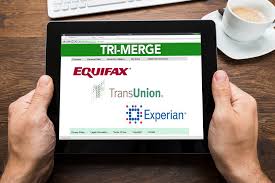Gain a clear understanding of what defines a credible appraisal, the appraisal process itself, the key elements that constitute a reliable appraisal, and the critical importance of appraiser independence. Additionally, learn the steps to take if you believe a correction is necessary in your appraisal report. Whether you are in the process of purchasing a residential property or have recently applied to refinance your home, it is important to know that lenders are required to obtain an appraisal conducted by an impartial and unbiased appraiser. This appraisal serves as the primary method for evaluating the adequacy of your collateral.
Understanding the Appraisal Process
An appraisal represents an expert opinion of a property’s value. For purposes such as estate planning, financial planning, or determining a sale price, individuals or their trusted advisors typically order an appraisal. However, when an appraisal is needed to establish the value of a property for loan purposes, federal regulations require the lender or its agent to initiate the appraisal order. The lender or its agent contacts a state-licensed or certified appraiser, specifying the property to be appraised and the intended purpose of the appraisal. The appraiser then determines the appropriate scope of work, which includes the level of property inspection (interior, exterior, or none), the valuation approaches needed, and any lender-specific requirements. In some cases, the lender may engage an Appraisal Management Company (AMC) to facilitate the process.
There is no single standardized format for appraisal reports. However, in residential mortgage lending, Government-Sponsored Enterprises (GSEs) like Fannie Mae (FNMA) and Freddie Mac (FHLMC) have developed widely-used residential appraisal report forms for properties used as collateral. Regardless of the format or report type, all appraisal reports must include enough detailed information to ensure that the intended users can fully understand the conclusions presented.
• If an appraisal requires an interior inspection, the appraiser will coordinate with the homeowner (or, in the case of a sale, with the agent or seller) to inspect both the interior and exterior of the property. However, not all appraisals necessitate an interior inspection.
• The appraiser will research county and municipal records, Multiple Listing Service (MLS) data, and other relevant sources to gather information about the property and the surrounding market area.
• The appraiser will evaluate recent sales and listings of comparable properties, also known as “comparables.” These comparables are properties with similar characteristics, such as utility, quality, age, and amenities, located within the same market area. In areas with limited recent sales, comparables may be selected from similar neighborhoods nearby.
• The sales comparison approach is often the primary method used for valuing residential properties. In this approach, the appraiser analyzes and compares recent sales of similar properties, taking into account factors like living area, lot size, style, age, construction quality, number of bedrooms and bathrooms, and the presence or absence of features like a garage.
• The cost approach is another method appraisers may use. This involves estimating the current replacement cost of constructing a replica of the existing structure, minus any depreciation, and adding the value of the land. This approach is particularly useful for appraising newer homes with minimal depreciation.
• The income approach is typically applied when appraising properties with multiple units (two, three, or four), where rental income influences buyer and seller decisions. It is less common for single-family residences in areas primarily occupied by homeowners.
• After gathering and analyzing all relevant data, the appraiser develops an opinion of value by considering the values derived from the sales comparison approach, and if applicable, the cost and income approaches. These values are reconciled to arrive at a final opinion of value, which is then presented in a report to the lender.
Key Elements of a Credible Appraisal
A credible appraisal must clearly identify the property being appraised, outline the scope of work conducted by the appraiser, and specify the client, other intended users, and the intended use of the report. The report should include the defined value (e.g., market value), the effective date of the value, the relevant characteristics of the subject property, and any specific instructions from the lender, Fannie Mae, Freddie Mac, VA, FHA, or other entities. Additionally, a credible appraisal must effectively present the data and analysis supporting the appraiser’s opinion of value. It must also adhere to the Uniform Standards of Professional Appraisal Practice (USPAP) and comply with all applicable regulations, including the Federal Fair Housing Act, ECOA, and any client-specific requirements.
The Significance of Appraiser Independence
Appraisers are professionally trained to resist any attempts to influence their analysis or value opinion, maintaining independence, impartiality, and objectivity. The appraiser holds full responsibility for the analyses, opinions, and conclusions presented in the appraisal. Ensuring appraiser independence is crucial for protecting clients and intended users, while also preserving public trust in the credibility of appraisal reports. Additionally, both federal and state laws mandate appraiser independence. Without public trust, mortgage investors could pull back from the market, leading to a shortage of funds for residential lending.
What to Do if a Correction or Additional Relevant Data Is Needed in Your Appraisal
If, after reviewing your appraisal, you believe that important information regarding the subject property or relevant comparables was overlooked, it is advisable to discuss your concerns with your lender. You should submit your concerns in writing, requesting that the appraiser be asked to address these issues. The appraiser will then review the appraisal and, if additional credible information is relevant to the assignment, may issue a revised appraisal with commentary that addresses your concerns.
Steps to Take in Cases of Fraudulent or Incompetent Appraisal Practices
If you suspect fraudulent or incompetent appraisal practices, promptly submit your concerns in writing to the lender. Additionally, you may consider filing a complaint with the state appraiser regulatory agency in the state where the property is located. Contact information for each state can be found at www.asc.gov. You can also report your concerns to the Financial Fraud Enforcement Task Force at www.stopfraud.gov. Please note that state appraiser regulatory agencies typically do not intervene to resolve issues directly related to your transaction. Instead, they will assess your complaint based on the appraiser’s legal obligations and may take disciplinary action if warranted.
Appraisal: An expert opinion of value.
The Appraisal Foundation: A non-profit organization, authorized by Congress in 1987, dedicated to advancing the appraisal profession. The Foundation fulfills its mission through the efforts of three independent boards: the Appraisal Practices Board (APB), the Appraiser Qualifications Board (AQB), and the Appraisal Standards Board (ASB).
Appraisal Management Company: These companies are contracted by entities such as lenders to provide appraisal services. They act as intermediaries, selecting appraisers and offering additional valuation services.
Appraisal Practices Board (APB): Responsible for identifying and issuing opinions on recognized valuation methods and techniques applicable across the appraisal profession. Compliance with APB guidance is voluntary.
Appraisal Review: The process of developing and communicating an opinion regarding the quality of another appraiser’s work.
Appraisal Standards Board (ASB): Establishes the ethical and competency standards for appraisals and reporting within the Uniform Standards of Professional Appraisal Practice (USPAP).
Appraiser Qualifications Board (AQB): Sets the minimum qualification standards for state licensing, certification, and recertification of real property appraisers.
Comparable (Comps): Properties with similar characteristics used in the valuation process for comparison.
Cost Approach: A method of valuation where the value is derived by estimating the current cost to rebuild the existing structure, subtracting depreciation, and adding the land value.
Credible Appraisal: An appraisal that is well-supported, logical, and provides relevant evidence backing the opinion of value.
Income Approach: A valuation method used primarily for income-producing properties by converting anticipated cash flows into property value.
Licensed and Certified Appraisers: Professionals licensed and certified by state appraiser regulatory agencies after meeting education, experience, and examination requirements. States must, at minimum, adhere to the criteria set by the Appraiser Qualifications Board of The Appraisal Foundation.
Multiple Listing Service (MLS): Typically operated by local or regional REALTOR® associations, MLS databases provide property listings, sales, and expired listings, which most licensed and certified appraisers use.
Public Record Data: Includes local, state, and federal records relating to the subject property and comparables. Common sources include county and municipal records like deeds, tax assessments, and plat surveys. Other records may include soil surveys, topography maps, and zoning data.
Sales Comparison Approach: A valuation method where the property being appraised is compared to recently sold similar properties, with adjustments made for differences between the comparables and the subject property.
Appraisal Frequently Asked Questions (FAQs)
Why is an appraisal necessary?
Lenders require an appraisal to obtain an accurate description of the property and an independent opinion of value. The appraisal helps document that the real estate is suitable collateral and determines whether the property’s value supports the lending decision.
Why isn’t the consumer considered the client even if they pay the appraisal fee?
Federal banking regulations mandate that the financial institution is the client, regardless of who pays the fee.
How does the appraiser develop the value opinion?
The appraiser researches market data, public records, and interviews buyers, sellers, and real estate brokers active in the area. The research includes sales, leases, and current listings of similar properties, as well as land sales and construction costs. After considering all factors, the appraiser develops an opinion of value and prepares the appraisal report.
I’ve heard about issues with appraisers traveling long distances to appraise homes. How far is too far?
The key issue is not distance, but whether the appraiser is competent in the area. Some appraisers are knowledgeable and qualified across multiple geographic regions, while others specialize in a limited range. An appraiser unfamiliar with the local market may lack the experience needed to provide a reliable valuation.
What information should I provide to the appraiser?
The more detailed information the appraiser has, the more accurate the appraisal will be. Relevant details include any private agreements, restrictions, easements, encroachments, or other unique property characteristics. The appraiser may inquire about the property’s title, sales history, rental history, occupancy, pending purchase agreements, or recent transfers. Physical characteristics, additions, and permits are also relevant. If hiring the appraiser directly, be clear about the intended use of the appraisal.
What should the appraiser do during a home inspection?
Depending on the client’s requirements, the appraiser may conduct an interior and/or exterior inspection. If a full inspection is needed, the appraiser evaluates the site, improvements, and structures, considering factors like size, topography, drainage, and building condition. The appraiser also assesses the property’s features, including style, number of rooms, and overall condition. Unlike a home inspector, the appraiser’s goal is to gather information to determine property value, not to identify structural issues or necessary repairs.
What is a comparable sale or listing?
A comparable sale is a recent sale similar to the subject property in terms of physical features, functionality, and location. A comparable listing is a current listing with similar characteristics. Comparable sales and listings are essential for the sales comparison approach, which is often the most reliable indicator of a residential property’s value.
Why do appraisers make “adjustments”?
Since no two properties are identical, adjustments account for differences between the subject property and comparable properties. Adjustments are made by adding or subtracting value from the sale prices of comparables to reflect the subject property’s characteristics accurately.
When would an appraiser use the cost approach or sales comparison approach?
The cost approach is used when a buyer would not pay more for the property than the cost to build a similar one. This approach is particularly useful for properties with unique features or those with significant depreciation. The sales comparison approach is preferred when comparable properties are available, as it directly reflects market trends.
The appraiser did not complete an income approach to value. Is that acceptable?
In most cases, yes. The income approach is typically used for income-producing properties where rental potential is a primary concern. For owner-occupied residential properties, it is less relevant.
What elements should a credible appraisal include?
- A clear, accurate description of the subject property
- Recent and highly comparable sales
- Comments that explain key aspects of the appraisal
- An opinion of value supported by the analysis of comparable sales
What should I do if I believe a correction is needed in the appraisal report?
Submit your concerns in writing to the lender, providing evidence to support your position. For example, if the living area size is incorrect, provide documentation to verify the correct size. If you believe more relevant comparables were overlooked, submit a list of comparables you recommend. The lender will forward this information to the appraiser for consideration.
What are my options if the appraisal remains flawed after reconsideration?
You may request the lender order an appraisal review or a second appraisal, though they are not obligated to do so. In an appraisal review, another appraiser verifies the original data and may identify additional comparables. If the review appraiser disagrees with the original valuation, they may perform a new sales comparison and provide their own opinion of value.
How do I understand codes used in the appraisal for elements like condition, construction quality, and location?
The appraisal report may be prepared according to the Uniform Appraisal Dataset (UAD) by Fannie Mae and Freddie Mac, requiring standardized responses, formats, and abbreviations. Check the appraisal for a UAD Definitions Addendum, or request it from the lender. You can also access this information online at Fannie Mae’s UAD Appendix.
Why doesn’t The Appraisal Foundation enforce the Uniform Standards of Professional Appraisal Practice (USPAP)?
The Appraisal Foundation establishes appraisal standards and qualifications but does not have enforcement authority. Formal enforcement is handled by state appraiser regulatory agencies. There are 55 jurisdictions that require licensed or certified appraisers to comply with USPAP.
In conclusion, understanding the appraisal process is crucial whether you are buying, selling, or refinancing a property. A well-conducted appraisal not only establishes a reliable opinion of value but also ensures transparency and fairness in real estate transactions. From knowing what information to provide to the appraiser, understanding different valuation methods, and recognizing the importance of appraiser independence, being informed equips you to make better decisions. Should discrepancies or concerns arise, knowing the appropriate steps to address them can help maintain the credibility of the appraisal and protect your interests. Ultimately, a thorough and credible appraisal builds trust among lenders, buyers, sellers, and the broader market, laying the foundation for sound financial decisions and successful real estate ventures.








